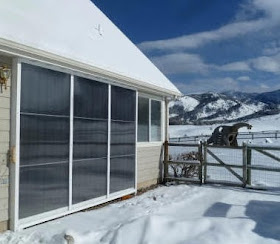While you might expect the lime to wash off in the first rain, it does not, and appears to last for several years. It is cheap, readily available, and easy to apply.
According to David and Wolfgang it is quite effective in reducing attic temperatures and AC bills.
David's Experiment
David reported on his white roof experiment back in 2010.
On performance, David reports:
- House temperature with AC off 87F to 92F before, and 79F to 82F after coating.
- Attic temperatures before 120F to 140F, and 90F to 97F after coating.
This has resulted in much less AC run time.
All the details on David's white roof coating...
Wolfgang's White Roof
Wolfgang after looking at a number of potential coatings for his roof decided to give the hydrated lime a try.
The house is located in Texas.
 |
| Reflective hydrated lime roof coating |
Wolfgang's records indicate:
- Average summer day saving of 10 KWH per day
- Attic temperatures drop from as high as 150F to just a few degrees above ambient
- Estimated drop in AC runtime of 40%
- Payback period of 60 day
All the details on Wolfgang's white roof coating...
If the hydrated lime is not appealing, there are commercial white coatings available that can be applied. I'd like to hear from anyone has tried one of the commercial coatings.
Gary










